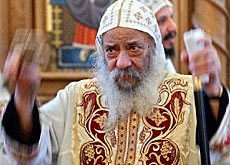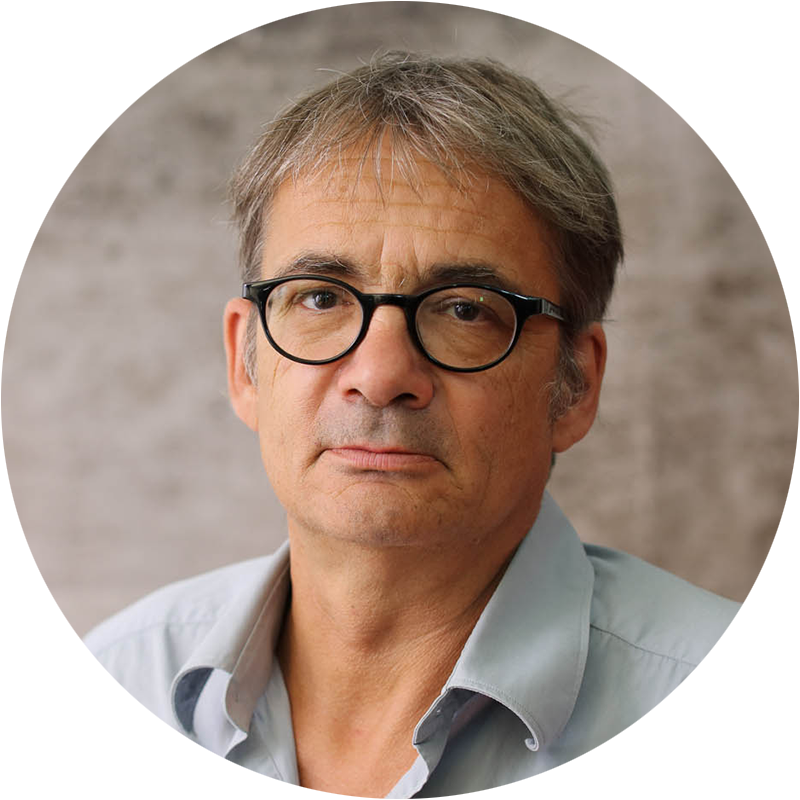Orthodox Copts open church in Switzerland

Pope Shenouda III has opened the orthodox Coptic community's first church in Switzerland.
His recent visit to Geneva and to the town of St Maurice is expected to give this Christian minority a higher profile in Switzerland.
“The inauguration of the first Coptic church in Meyrin [near Geneva] shows the importance of the diaspora for His Holiness Shenouda III,” said Wahid Hassab Alla, a Coptic theologian, who has lived in Switzerland for 27 years.
The Coptic Church, whose origins lie in ancient Egypt, has only about 1,000 followers in Switzerland.
The first Copts came in the 1960s. Most of them were students or people who tried to escape poverty in search of work.
“The wave of immigrants coincides with the launch of the socialist revolution by Gamal Abdel Nasser in Egypt,” recalled Georges Abi-Saab of Geneva’s Graduate Institute of International Studies.
Discrimination
For many years Egypt’s Coptic community felt it had been the victim of religious persecution, according to Abi-Saab.
But the frustration was also rooted in President Nasser’s privatisation programme, as many Copts belonged to Egypt’s affluent upper class.
Tension between the Copts and growing Islamic movements added to the perception that orthodox Christians were discriminated against in the Egyptian society.
“But the main reason for emigration remains the poor economic prospects for Copts and members of other religious denominations in Egypt,” said Hassab Alla.
Despite a life in exile, the Coptic community has managed to keep alive its traditions over the centuries.
History
The Coptic Church is seen as a source of early Christianity. According to the Bible, it was Saint Mark who brought Christian teachings to Egypt during the reign of the Roman emperor Nero in the first century AD.
The Church of Egypt also left its mark on Switzerland in the third century. The town of St Maurice in southwestern Switzerland derives its name from an officer of Rome’s Theban legion.
According to legend, Captain Maurice and his fellow soldiers were massacred by order of the Roman emperor because they disobeyed his commands and refused to renounce their Christian principles.
Modern archaeology supports the legend to some extent: the monastery of St Maurice keeps his alleged relics, which date from the third century AD.
Ever since, the Copts have considered this Catholic saint as one of theirs, and St Maurice has become a popular place of pilgrimage for orthodox Christians in Switzerland.
By travelling to St Maurice, Pope Shenouda III became the first Coptic leader to make the pilgrimage to the town, which lies on an old military highway linking Rome and Geneva.
swissinfo, Frédéric Burnand in Geneva
About 10 million Copts live in Egypt, while another two million are based mainly in the US, Canada and Australia.
Switzerland’s Coptic community has about 1,000 members who live mainly in Zurich, Geneva, Lausanne, Yverdon and Biel/Bienne.
The first Coptic church in Switzerland was opened by Pope Shenouda III in Geneva in July.
Religion in Switzerland (Federal Statistics, 2000)
42% Catholics
35% Protestants
11% Atheists
4% Muslim
1.8% Orthodox Christians
0.2% Jewish
6% Others

In compliance with the JTI standards
More: SWI swissinfo.ch certified by the Journalism Trust Initiative


You can find an overview of ongoing debates with our journalists here. Please join us!
If you want to start a conversation about a topic raised in this article or want to report factual errors, email us at english@swissinfo.ch.